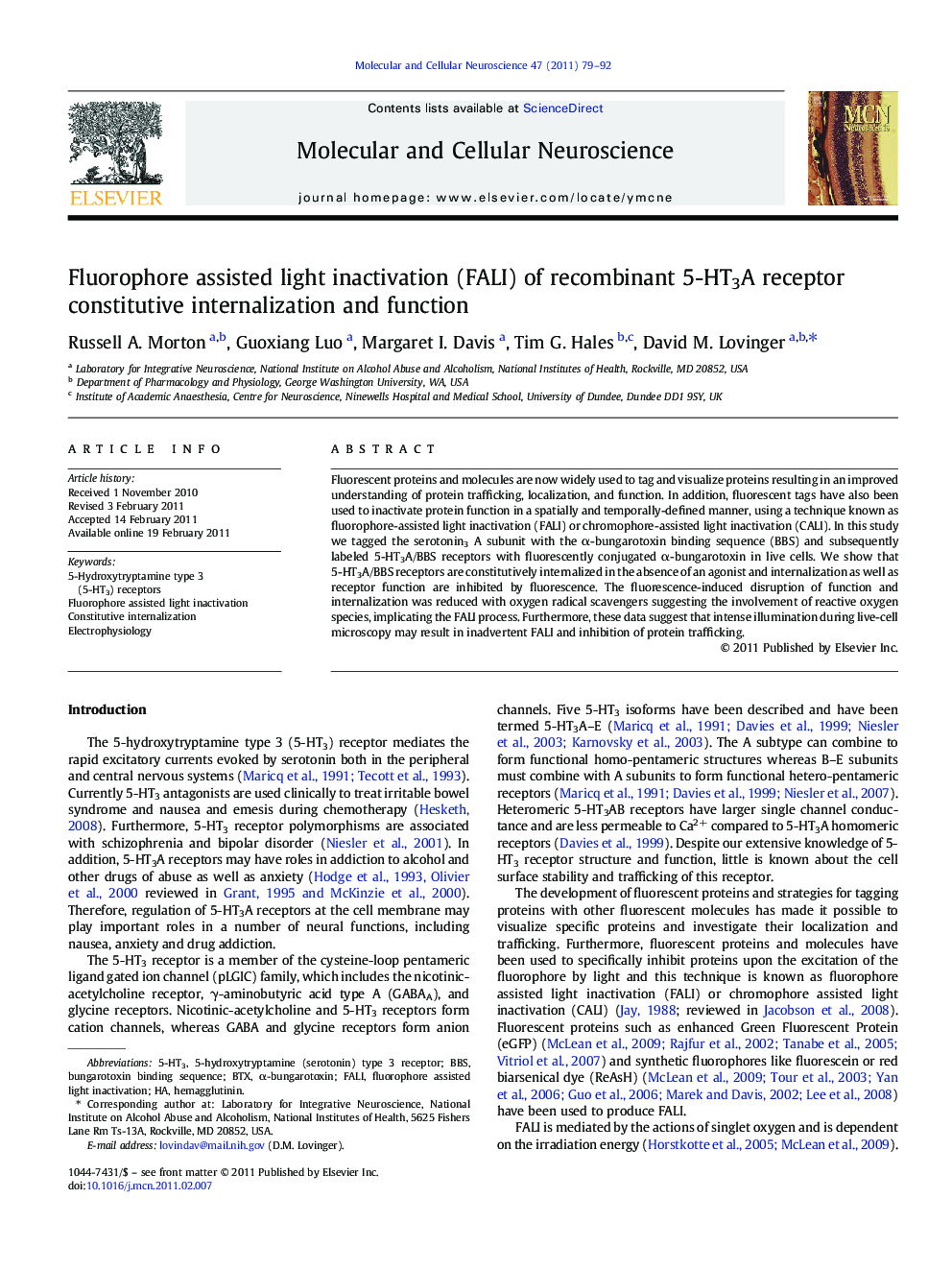| Article ID | Journal | Published Year | Pages | File Type |
|---|---|---|---|---|
| 10956667 | Molecular and Cellular Neuroscience | 2011 | 14 Pages |
Abstract
Fluorescent proteins and molecules are now widely used to tag and visualize proteins resulting in an improved understanding of protein trafficking, localization, and function. In addition, fluorescent tags have also been used to inactivate protein function in a spatially and temporally-defined manner, using a technique known as fluorophore-assisted light inactivation (FALI) or chromophore-assisted light inactivation (CALI). In this study we tagged the serotonin3 A subunit with the α-bungarotoxin binding sequence (BBS) and subsequently labeled 5-HT3A/BBS receptors with fluorescently conjugated α-bungarotoxin in live cells. We show that 5-HT3A/BBS receptors are constitutively internalized in the absence of an agonist and internalization as well as receptor function are inhibited by fluorescence. The fluorescence-induced disruption of function and internalization was reduced with oxygen radical scavengers suggesting the involvement of reactive oxygen species, implicating the FALI process. Furthermore, these data suggest that intense illumination during live-cell microscopy may result in inadvertent FALI and inhibition of protein trafficking.
Related Topics
Life Sciences
Biochemistry, Genetics and Molecular Biology
Cell Biology
Authors
Russell A. Morton, Guoxiang Luo, Margaret I. Davis, Tim G. Hales, David M. Lovinger,
